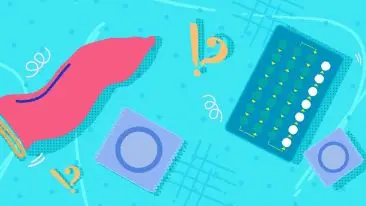Are There Over-the-Counter Muscle Relaxers?
There are no true OTC muscle relaxers, but NSAIDs like ibuprofen or naproxen can relieve muscle pain. For severe spasms, prescription medications are needed.
Over-The-Counter Muscle Relaxers: What You Need To Know
There are no true muscle relaxers available over the counter in the US or EU, but some OTC medications can relieve pain and spasms. This guide explains what works, what’s prescription-only, and when to consult a doctor online.
You may find concentrating difficult when your back spasms or neck muscles won't relax. The effectiveness of muscle relaxants varies between over-the-counter and prescription medications. This article aims to explore the differences between over-the-counter and prescription muscle relaxers.
This discussion will also discuss what muscle relaxers are, their effects and precautions, and how these drugs work. As a final point, we can discuss when it's appropriate to see a medical professional for treatment.
OTC Muscle Relaxers: What You Can Use
The over-the-counter muscle relaxers aren't available over the counter. Still, some over-the-counter medicines can help treat back pain, spasms, and other conditions that muscle relaxers can treat.
- Guaifenesin: Helps relieve backaches and spasms in the upper back. You should consult your healthcare provider if you take guaifenesin (Mucinex) for muscle relaxation.
- NSAIDs: Naproxen and ibuprofen (Advil) are nonsteroidal anti-inflammatory drugs that reduce pain and inflammation, making them effective for short-term back pain and muscle spasms. NSAIDs are also available at higher dosages by prescription.
- Acetaminophen: Tylenol (acetaminophen) blocks the production of substances responsible for pain. Because acetaminophen and NSAIDs are different drugs, medical providers may recommend alternating between them.
Comparison of OTC and Prescription Muscle Relaxers
| Medication Type | Examples | Available OTC? | Primary Use |
|---|---|---|---|
| NSAIDs | Ibuprofen, Naproxen | Yes | Muscle pain and inflammation |
| Guaifenesin | Mucinex | Yes (limited) | Mild back or upper back spasms |
| Acetaminophen | Tylenol | Yes | General pain relief |
| Methocarbamol | Robaxin | No (EU OTC) | Back muscle pain |
| Cyclobenzaprine | Flexeril | No | Acute muscle spasms |
| Tizanidine | Zanaflex | No | Spasticity in neurological issues |
| Baclofen | Lioresal | No | Spasticity from spinal injury |
| Carisoprodol | Soma | No | Short-term muscle pain (rare use) |
Common Prescription Muscle Relaxers
The side effects of prescription muscle relaxers may be more pronounced than those of OTC muscle relaxers.
- Methocarbamol: Methocarbamol (Robaxin) is an OTC muscle relaxant sold outside the United States that treats back muscle pain. It has fewer sedative effects than other types of muscle relaxants. Compared with people who did not take methocarbamol for up to eight days, 44% of those who took it experienced muscle pain relief.
- Metaxalone: There are fewer side effects associated with Metaxalone (Skelaxin) than with other muscle relaxants. Some insurance plans do not cover it because it is more expensive than other options.
- Carisoprodol: Nonbenzodiazepine drugs such as carisoprodol (Soma) are not benzodiazepines. It belongs to the same Schedule IV drug class as Xanax, Ativan, and Valium, which makes it a less commonly used muscle relaxer. As it can be habit-forming and is not effective for prolonged use, it should only be used for a maximum of 2-3 weeks. Drowsiness and dizziness can occur; older adults over 65 should not take it.
- Tizanidine: Patients with multiple sclerosis or cerebral palsy may benefit from tizanidine (Zanaflex), an antispasmodic drug. The side effects of tizanidine are usually less severe than those associated with other similar drugs. Despite its effectiveness for chronic muscle spasms, this medication is not recommended for acute muscular problems or back pain.
- Baclofen: Muscle relaxants such as this medication are approved by the United States Food and Drug Administration (FDA) to treat conditions such as multiple sclerosis, spinal cord lesions, clonus, and spasms of the flexor muscles. A patient with back pain from a spinal cord injury is more likely to have it prescribed if they have back pain associated with the injury rather than acute back pain. Drowsiness is one of the side effects caused by Baclofen (Lioresal).
- Cyclobenzaprine: Flexeril (cyclobenzaprine) is an effective muscle relaxer associated with drowsiness. Older adults may also experience dry mouth as a result of it. Due to its widespread availability and insurance coverage, this is a popular first prescription.
What Are Muscle Relaxants?
Medication that reduces muscle spasms and pain is known as a muscle relaxer.
How Muscle Relaxers Work
Generally, muscle relaxers fall into two categories:
- Some neurons in the brain are prevented from transmitting information by antispasmodics. Their direct effect on the central nervous system reduces spasms and spasticity. Most commonly prescribed for acute back pain caused by muscle injuries or throwing out your back.
- Antispastics primarily target the spine or skeletal muscles. In addition to relaxing tight muscles, they also calm spasms. It is not common to use these medications to treat acute back pain, but they are used to treat chronic conditions involving nerve or spinal cord dysfunction. Multiple sclerosis, cerebral palsy, and spinal cord injuries are common conditions treated with antispastic drugs.
Undoubtedly, both types of drugs can relax muscles and ease the pain caused by stiff or spasming muscles. However, their everyday use and side effects are different.
Common Side Effects of Muscle Relaxants
Antispasmodic drugs can cause the following side effects:
- Constipation
- Dry eyes
- Bloating
- Nausea
- Weakness
- Dry mouth
- Drowsiness
- Dizziness
- Blurred vision
Antispastic drugs typically cause the following side effects:
- Weakness
- Nausea
- Tiredness
- Confusion
- Headache
- Problems falling asleep or staying asleep
- Constipation
- Dizziness
Muscle Relaxant Risks and Precautions
Take these medications cautiously if you suffer from back pain or muscle spasms. Many drugs can cause drowsiness or dizziness, increasing the risk of falling or other injuries. Alcohol and antihistamines or sedatives that can cause drowsiness should not be taken with muscle relaxers.
Muscle relaxers should be avoided during pregnancy and breastfeeding. Consult your healthcare provider and pharmacist if you are pregnant or breastfeeding.
Muscle relaxers may have more side effects for older adults or those with kidney or liver problems.
If you are taking any other medications, OTC drugs, dietary supplements, or herbs, tell your medical provider so that interactions and side effects can be avoided.
When to See a Doctor for Muscle Spasms
Consult a medical professional if you suspect a chronic problem with muscle spasms or a sudden onset of muscle spasms.
You should also seek medical attention if you experience back pain or other muscle spasms that do not resolve.
Frequently Asked Questions About Muscle Relaxers
What can I take for muscle spasms without a prescription?
NSAIDs like ibuprofen or naproxen are available over the counter and can reduce pain and inflammation. Guaifenesin may offer mild relief.
Can I get muscle relaxers online?
Yes — but only with a prescription. Online clinics like Mobi Doctor can evaluate your symptoms and issue a prescription if medically appropriate.
Are muscle relaxers addictive?
Some, such as carisoprodol and benzodiazepine-based relaxers, have addictive potential. They're typically prescribed for short-term use only.
Are there any natural or herbal muscle relaxers?
Some supplements, like valerian root or magnesium, may support relaxation but are not as effective as prescription treatments.
How quickly do muscle relaxers work?
Prescription muscle relaxers usually take 30 minutes to 2 hours to begin working, depending on the drug and dosage.
How Mobi Doctor Can Help
Mobi Doctor allows you to access urgent care online.
Mobi Doctor is a virtual clinic that provides online consultations and 24/7 support for people with health problems. You can talk to our experts about any health problem, whether an infection, an injury, or a mental health issue. We offer tailored advice and support from our team of doctors and experts.






